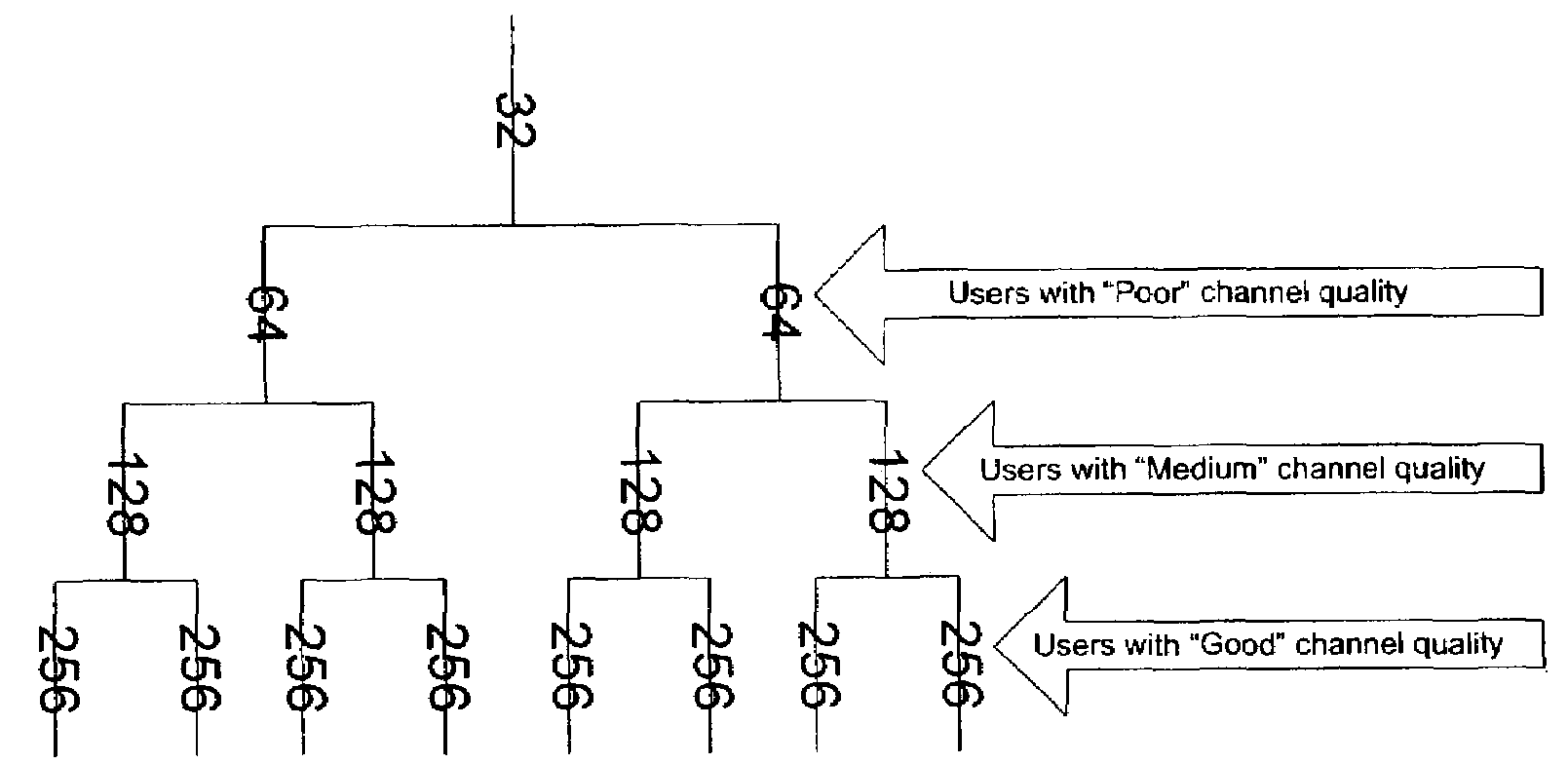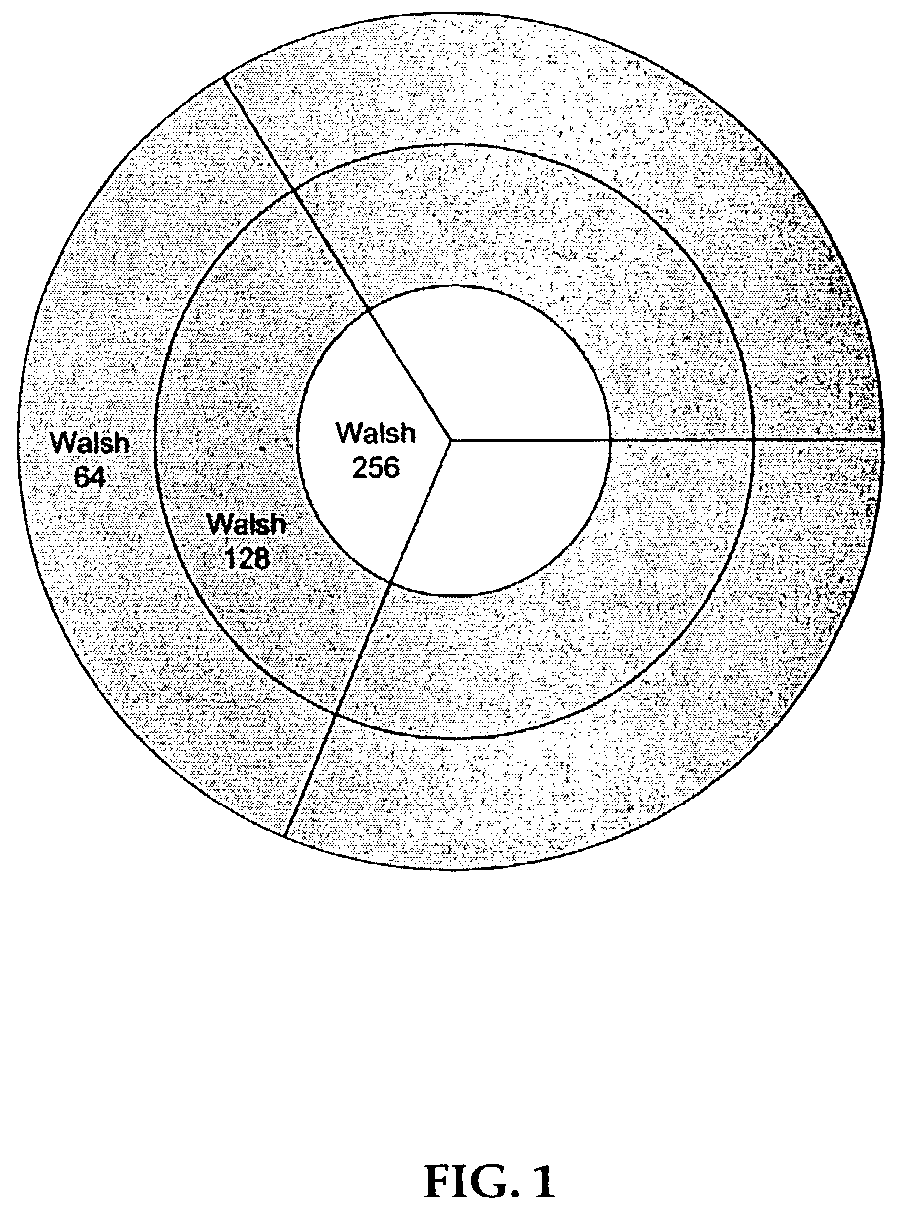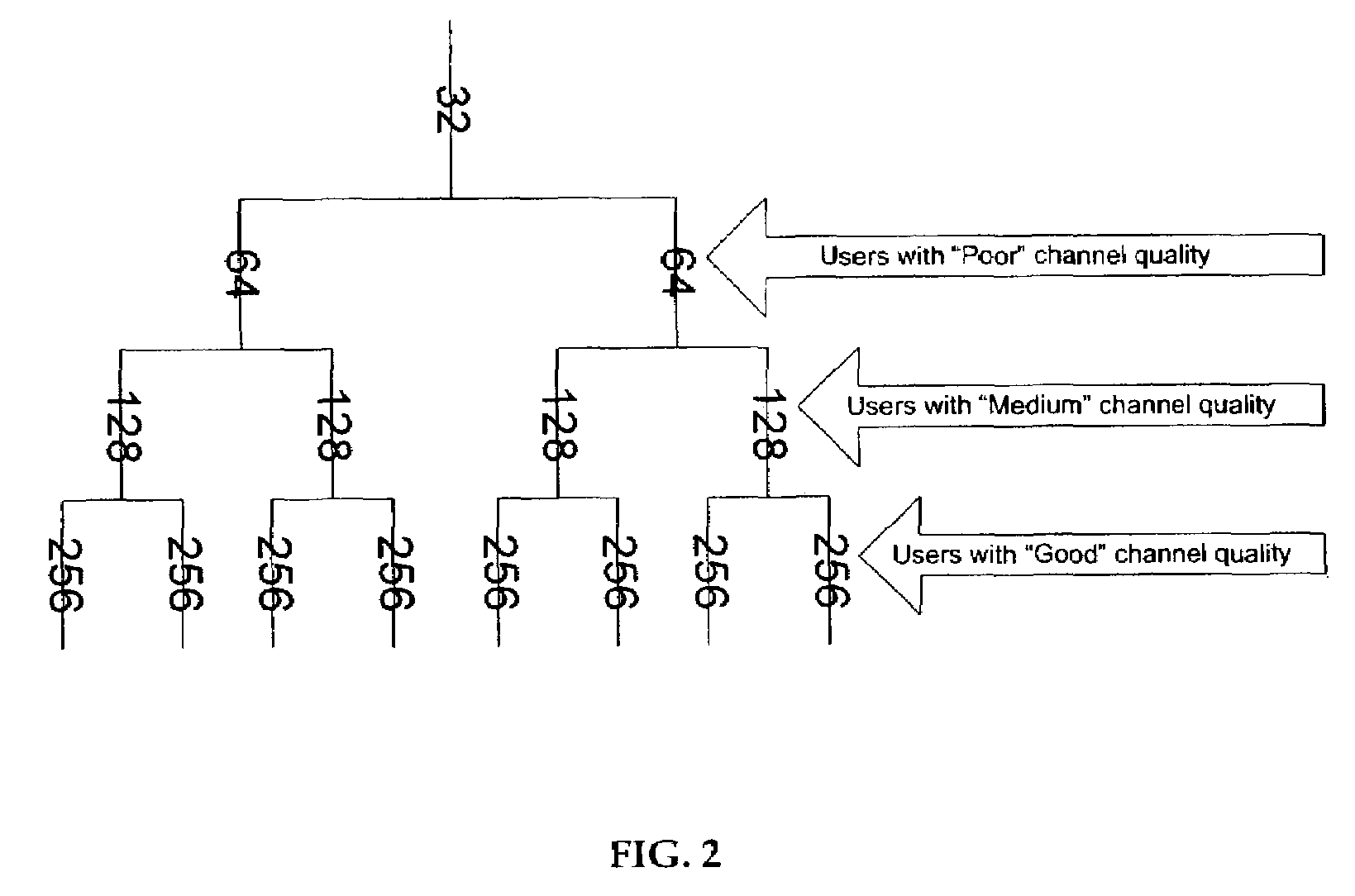Method of adaptive Walsh code allocation
a code allocation and adaptive technology, applied in the field of wireless communication, to achieve the effect of increasing voice capacity
- Summary
- Abstract
- Description
- Claims
- Application Information
AI Technical Summary
Benefits of technology
Problems solved by technology
Method used
Image
Examples
Embodiment Construction
[0024]In current wireless systems employing the CDMA-based technology, orthogonal Walsh codes may be allocated for voice channels to different users. On the downlink, the total Walsh space may be shared between all the users on the carrier. In the uplink direction, all the Walsh space may be available to a given user. In general, Walsh codes with fixed spreading factor may be allocated to different users. For example, in a CDMA 2000 1x, a radio configuration 3 (“RC3”) uses a spreading factor of 64, while a radio configuration 4 (“RC4”) uses a spreading factor of 128 in the downlink. A Walsh code with a given spreading factor may be allocated at the time of call set up for the duration of the call of each user. For users in soft handoff (“SHO”), a Walsh code may be allocated from each sector in the active set. For the purposes of the present disclosure, an active set may consist of sector(s) with which each user may be in communication simultaneously.
[0025]The capacity of a CDMA syst...
PUM
 Login to View More
Login to View More Abstract
Description
Claims
Application Information
 Login to View More
Login to View More - R&D
- Intellectual Property
- Life Sciences
- Materials
- Tech Scout
- Unparalleled Data Quality
- Higher Quality Content
- 60% Fewer Hallucinations
Browse by: Latest US Patents, China's latest patents, Technical Efficacy Thesaurus, Application Domain, Technology Topic, Popular Technical Reports.
© 2025 PatSnap. All rights reserved.Legal|Privacy policy|Modern Slavery Act Transparency Statement|Sitemap|About US| Contact US: help@patsnap.com



